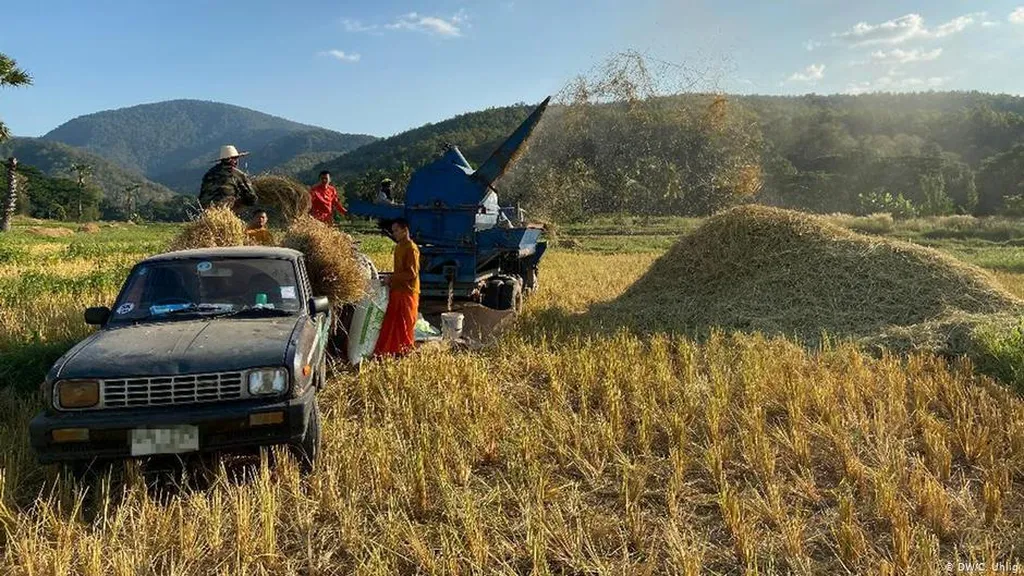In the heart of Thailand’s rice paddies, a humble agricultural byproduct is undergoing a remarkable transformation, offering new avenues for sustainable energy and soil management. Rice straw, typically left to rot or burned, is now being repurposed into biochar, a carbon-rich material that could revolutionize the agritech and energy sectors. A recent study, led by Saowalak Somboon from the Department of Soil Science and Environment at Khon Kaen University, has unveiled the impressive potential of rice straw-derived biochar (RSBC), with findings published in the journal Scientific Reports, known in English as ‘Nature Scientific Reports’.
The study, which employed advanced synchrotron techniques, revealed that the pyrolysis of rice straw results in a 70% mass reduction, yielding biochar with significantly enhanced properties. “The fixed carbon content, cation exchange capacity, and water-holding capacity of RSBC are markedly higher than those of raw rice straw,” Somboon explained. This improvement is attributed to the enrichment of aromatic functional groups, which occur as lignin is preserved while cellulose and hemicellulose decompose during the pyrolysis process.
One of the most striking findings was the transformation of the pore structure within the biochar. Using synchrotron-based X-ray tomographic microscopy, the researchers observed an 18% increase in total porosity, driven by a substantial rise in open-pore porosity and a dramatic reduction in closed-pore porosity. “The macropore volume expanded by 271%, leading to a 267% increase in total pore volume,” Somboon noted. These structural changes are key to the improved water-holding and cation exchange capacities of RSBC, making it an attractive option for soil amendment and carbon sequestration.
The implications of this research extend far beyond the rice fields of Thailand. As the world seeks sustainable solutions to agricultural waste management and soil degradation, rice straw-derived biochar emerges as a promising candidate. Its enhanced properties could improve soil fertility, increase water retention, and reduce the need for chemical fertilizers, all while sequestering carbon and reducing greenhouse gas emissions.
Moreover, the production of RSBC via traditional drum kilns offers a low-tech, scalable solution that could be readily adopted by farmers and energy producers alike. This could open up new commercial opportunities in the energy sector, particularly in the production of bioenergy and biofuels, while simultaneously addressing the environmental challenges posed by agricultural waste.
As the global demand for sustainable and renewable energy sources continues to grow, innovations like RSBC could play a pivotal role in shaping the future of the energy landscape. By transforming an abundant agricultural byproduct into a valuable resource, this research not only highlights the potential of rice straw-derived biochar but also underscores the importance of interdisciplinary collaboration in driving forward the agritech and energy sectors.
In the words of Saowalak Somboon, “This study is just the beginning. The potential applications of rice straw-derived biochar are vast, and we are excited to explore its impact on soil health, carbon sequestration, and renewable energy production.” As we look to the future, the humble rice straw may well become a cornerstone of sustainable agriculture and energy production, offering a beacon of hope in the fight against climate change and environmental degradation.

